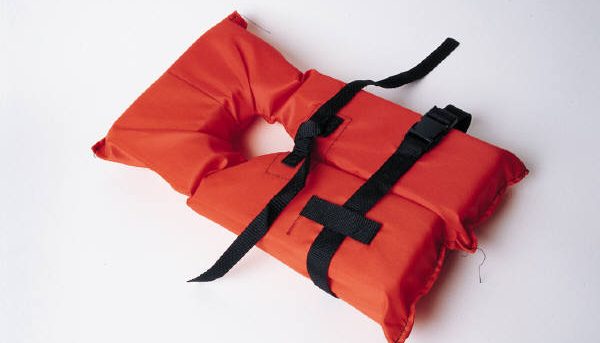USCG has issued safety alert in order to remind all vessel operators to routinely inspect their lifejackets to ensure they are suitable for service.
Recently Coast Guard inspectors in Key West, Florida discovered two vessels that had over 60 lifejackets that were required to be removed and destroyed. It was discovered that the unicellular foam buoyant material within the nylon outer shell had degraded significantly over time, broke apart, crumbled and in some instances was reduced to dust. The lifejackets were properly stored, kept dry, and not under direct sunlight; however, the location was very hot at times.
These particular lifejackets were the Type 1, 160RT model distributed by “The Safeguard Corporation” of Covington, Kentucky. They were manufactured in China and approximately nine years old. The distributor is no longer in business. Over the years, the Coast Guard has distributed a number of other safety alerts related to lifejackets and personal floatation devices.
As a result of this recent discovery the Coast Guard strongly recommends that vessel owners and operators inspect their Type 1 unicellular plastic foam lifejackets for potential indications of failure or degradation, specifically:
- Compression: The lifejacket may be compressed from many years of stowage.
- Loss of resiliency: The lifejacket is excessively hard, stiff or its foam is brittle. Normally after compressing the lifejacket to about half its initial thickness, the foam should expand to its original dimension in a short period of time.
- Shrinkage: A physical reduction in size may be indicated by “wrinkling” of the coating on vinyl dipped type or by a loose fitting shell on a fabric-covered lifejacket.
- Manufacturer: While the potential for problems applies to all older PFDs, those manufactured by “The Safeguard Corporation” should be closely examined.
Further information may be found below
Source: USCG
































































